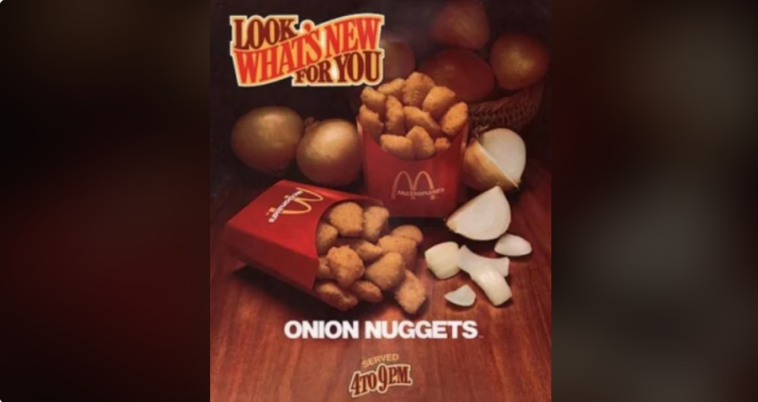The 1960s and ’70s were fast food’s Wild West era—a time when chains threw caution to the wind and served up some truly bonkers creations. We’re talking pineapple burgers that made executives sweat, pirate-themed chicken that actually worked, and spaghetti from a drive-thru window because apparently someone thought that made sense.
These weren’t just menu items but glimpses into an America drunk on optimism and convenience culture. Some flopped spectacularly (looking at you, Hula Burger), while others became regional legends that still haunt the dreams of nostalgic food lovers.
What makes these forgotten favorites so fascinating isn’t just their weirdness—it’s how they reveal an industry willing to take genuine risks before focus groups and corporate committee-think sanitized everything into beige mediocrity. So buckle up for a delicious trip through fast food’s most daring (and sometimes disastrous) experiments.
1. Red Barn’s Big Barney

This double-decker burger wasn’t just a Big Mac precursor—it was a Midwest-born innovator that beat McDonald’s to the punch. Introduced in 1961 or 1962 by Ohio-based Red Barn (about 5 years before the Big Mac), the Big Barney stacked two beef patties, American cheese, shredded lettuce, and a proprietary “special sauce” on a triple-layered bun.
The chain’s barn-shaped restaurants and cartoon mascots (“Hamburger Hungry,” “Chicken Hungry”) made it a quirky regional favorite. After merging with real estate conglomerate City Investing in 1978, advertising vanished, and franchise support crumbled.
Furthermore, maintaining the trademark barn buildings became financially unsustainable as competitors standardized cheaper designs. The remaining locations rebranded as “The Farm” in the 1980s, serving “Farm Boy” burgers (the Big Barney’s renamed twin) until the last Wisconsin outlet closed in 2020.
2. Long John Silver’s Peg Legs

Back in the day, Long John Silver’s was THE go-to pirate-themed fast food joint folks gathered at. When the fast food chain introduced Peg Legs as part of the menu in the 1970s and 1980s, using the same batter they fried their famed fish with, unsurprisingly, customers went crazy for them.
These breaded and fried chicken drumsticks, which were just as crispy and light as the fries and bits of fried batter that came with them, soon became a popular menu item. Unfortunately, they were eventually replaced by chicken planks, much to the disappointment of Peg Legs fans, and we haven’t seen them since.
3. Burger King’s Yumbo

This hot ham-and-cheese pioneer debuted as a gourmet oddity, possibly in 1968 or 1971, as a standalone item. Featuring lean ham slices and melted American cheese on a buttery, knotted roll, the Yumbo predated McDonald’s McDLT by 13 years with its custom foam warming container.
Despite its cult following, Burger King axed it nationally in 1976 to refocus on burgers, though Midwestern franchises kept serving it into the 1980s. The 2014 revival swapped the original roll for a toasted hoagie bun and added lettuce/mayo, and was met with mixed reviews, with some nostalgic fans unhappy about how the Yumbo was “modernized.”
4. McDonald’s Hula Burger

This pineapple-and-cheese sandwich emerged from corporate desperation during Lent, when Catholic customers avoided meat on Fridays. Ray Kroc (regarded as McDonald’s founder) personally designed the meatless option, which consists of a grilled pineapple ring with melted American cheese on a bun.
But when franchisee Lou Groen proposed his breaded fish sandwich instead, the two menu items faced a Lenten sales showdown. The Filet-O-Fish outsold the Hula Burger 350 to 6 in a single day, leading Kroc to abandon his tropical experiment. The Hula Burger’s fatal flaws? Unpeeled pineapple rings that burned on the grill, and a concept so bizarre that even abstaining Catholics preferred fish.
5. Pizza Hut’s Fiesta Taco Pizza

Although it sounds like a bizarre combination of the best Mexican and Italian cuisine, Pizza Hut’s Taco Pizza, which was first released in 1979, used to be a cult favorite among customers.
The Fiesta Taco Pizza originally featured beef, refried beans, lettuce, diced tomatoes, cheese, red onions, and taco sauce, all carefully assembled atop your standard pizza crust. Although the offering isn’t necessarily a discontinued item, as it is still being served at some locations in the US, it is more of an exception to the rule. Unlike the 1970s version, the present Taco Pizza comes with crushed tacos, and you get to pick between chicken and beef.
Unfortunately, you cannot order it online or get it through the “create your own” pizza option; you’ve got to ring in your order, which may require some persistence to find a location that still offers the pizza.
6. McDonald’s McSpaghetti

This pasta experiment began as part of McDonald’s disastrous menu expansion, which aimed to lure families with Italian-inspired meals like lasagna and fettuccine Alfredo. The McSpaghetti combined boiled noodles, marinara sauce, and optional meatballs, served in a white styrofoam clamshell with garlic bread.
Corporate envisioned it as a drive-thru replacement for casual dining outlets and competitors like Pizza Hut. However, cooking spaghetti required separate boiling stations, which slowed service times to 12 minutes or more per order.
Furthermore, Americans seemed to reject the idea of “fine dining” pasta that you’d have to eat from your lap in cars. The menu item ended up being axed stateside by the early 1980s; it found unexpected success in the Philippines, where it’s still served alongside fried chicken as a cultural staple.
7. McDonald’s Onion Nuggets

A brief, crispy interlude in the Golden Arches’ quest for a side dish rivaling their famous fries, McDonald’s Onion Nuggets arrived in the late 1970s (with regional testing beginning as early as 1975). These battered and deep-fried minced onion pieces were an early attempt to diversify the snack menu, specifically as a vegetarian-friendly option within a broader push for non-beef items. They arrived a few years before the iconic Chicken McNuggets transformed the industry and offered a savory, if somewhat unconventional, alternative to the ubiquitous onion ring that other chains had popularized.
Despite their humble charm, the Onion Nuggets never achieved widespread success. Their short lifespan (discontinued by 1979 in most markets) was primarily due to low customer demand and somewhat mismatched expectations, rather than immediate competition from the Chicken McNuggets, which arrived later and ultimately offered a wildly successful protein-based alternative. Their fleeting presence on the menu made them a true deep-fried ghost, a forgotten forerunner in McDonald’s never-ending snack innovation.
8. Burger King’s Whaler
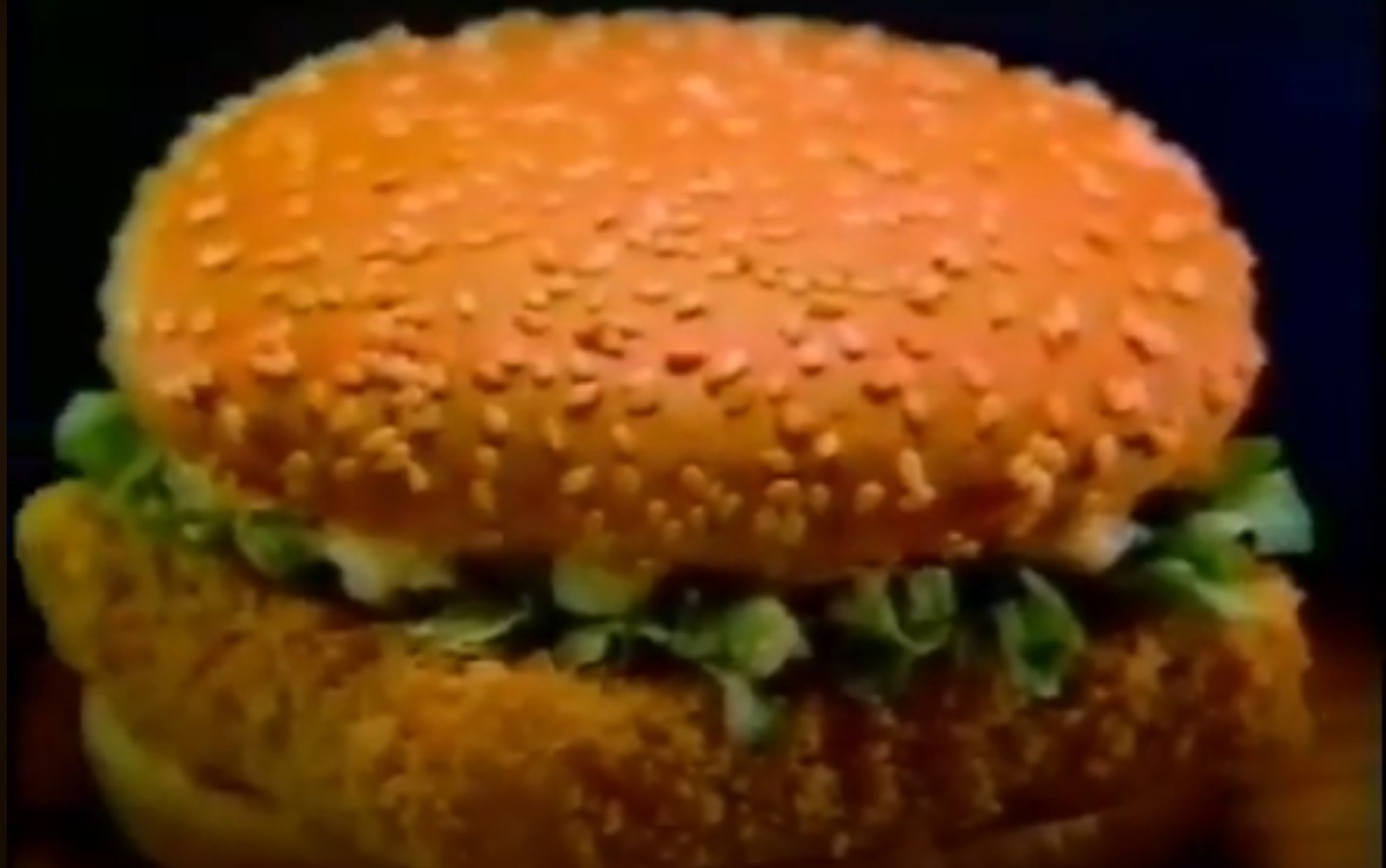
As McDonald’s Filet-O-Fish reeled in Lenten customers, Burger King cast its own line with the BK Whaler in 1969-1970 regionally, then nationally by the mid-1970s. Unlike its signature flame-grilled burgers, the Whaler featured a crispy, breaded fish patty, a generous dollop of tartar sauce, and crisp shredded lettuce, all served on a sesame seed bun.
While a respectable attempt, the BK Whaler never quite achieved the same legendary status or staying power as its McDonald’s counterpart. It was eventually phased out or replaced by other, often seasonal, fish sandwich iterations as Burger King continually tweaked its menu to keep pace with changing tastes and competitive pressures.
9. Arby’s Arby-Q
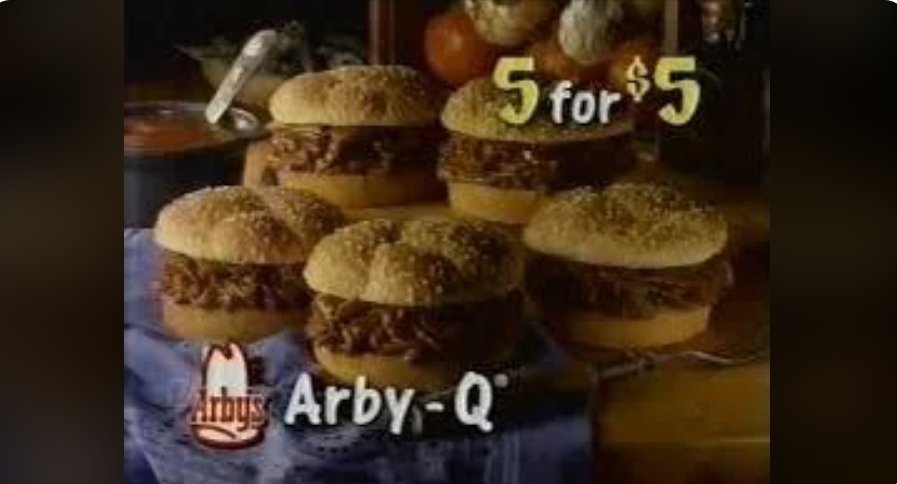
More than just roast beef, this sandwich offered a tangy twist on Arby’s classic in the 1970s, showcasing the chain’s early experimentation with sauced meats beyond their iconic Horsey Sauce. The Arby-Q featured thinly sliced roast beef drenched in a zesty, sweet-and-sour barbecue sauce, served hot on a toasted sesame seed bun. Its distinctive flavor profile offered a different kind of “zing” to their signature thinly sliced beef.
Despite developing a loyal following, the Arby-Q eventually faded from the national menu as Arby’s streamlined its offerings and focused on new innovations. While some regional locations might have kept it on for longer, it largely disappeared by the 1980s, leaving a void for fans of its unique barbecue kick and cementing its place as a beloved yet departed Arby’s relic. More recently, however, reports indicate that the Arby-Q has reappeared in some regional Arby’s locations, reigniting interest among enthusiasts.
10. Hardee’s Huskee
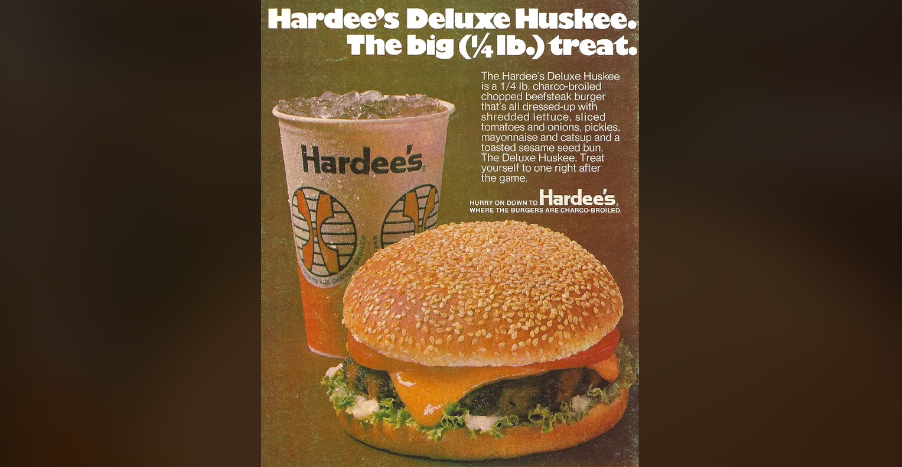
In its early years, Hardee’s built its reputation on the Huskee, its signature charbroiled hamburger. Introduced shortly after the company’s founding in 1960, the Huskee wasn’t a quirky sideline, but a foundational menu item that played a significant role in Hardee’s rapid expansion. It became so central to the brand that many locations proudly displayed “Home of the Huskee” on their signage.
Far from a short-lived experiment, the Huskee remained a popular and integral part of Hardee’s menu for decades, serving as the chain’s primary burger through the 1960s, ’70s, and much of the ’80s. Its eventual phasing out, likely in the late 1980s or early 1990s, marked the end of an era for long-time customers, as Hardee’s evolved its burger offerings with newer, often larger, or different specialty burgers.
11. KFC’s Kentucky Roast Beef
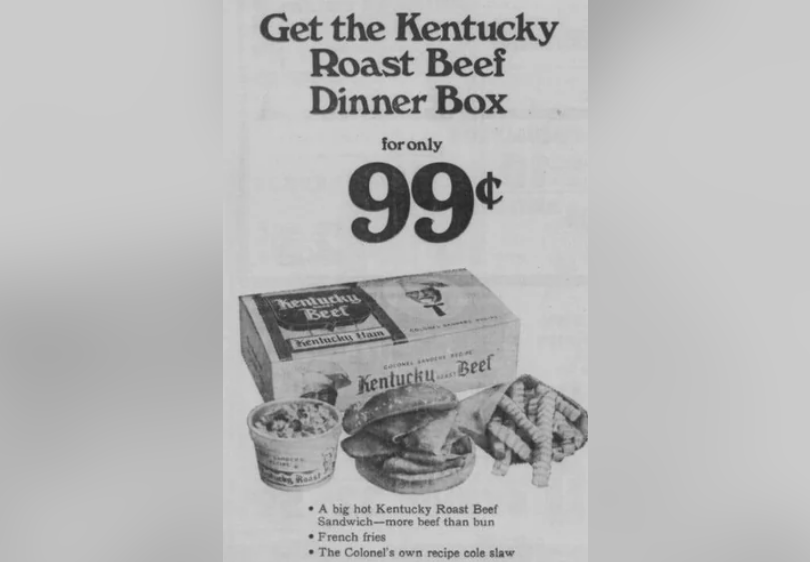
In 1968, with the chicken market firmly in its grasp, KFC made an audacious gamble to conquer a new protein frontier: roast beef. Far beyond being just a quiet test run, this was a full-scale invasion. The chain launched its Kentucky Roast Beef sandwich, a direct shot across the bow of competitors like Arby’s and Roy Rogers.
The offering was simple—thinly sliced roast beef served hot on a bun—but the operational shift was massive, requiring KFC to invest in expensive meat slicers for select locations and around 100 dedicated Kentucky Roast Beef ‘n’ Ham restaurants. This bold move was the chain’s attempt to diversify and capture the dinner crowd beyond the bucket. But the protein turf war proved unwinnable.
Customers already had established loyalties for roast beef, and the KFC brand was inextricably linked to fried chicken. The sandwiches failed to sizzle, leaving franchisees with costly, underused equipment. By the early 1970s, the company quietly put its roast beef ambitions out to pasture, making it a classic and costly cautionary tale about the perils of straying too far from your core identity.
12. McDonald’s Tripple Ripple Cone
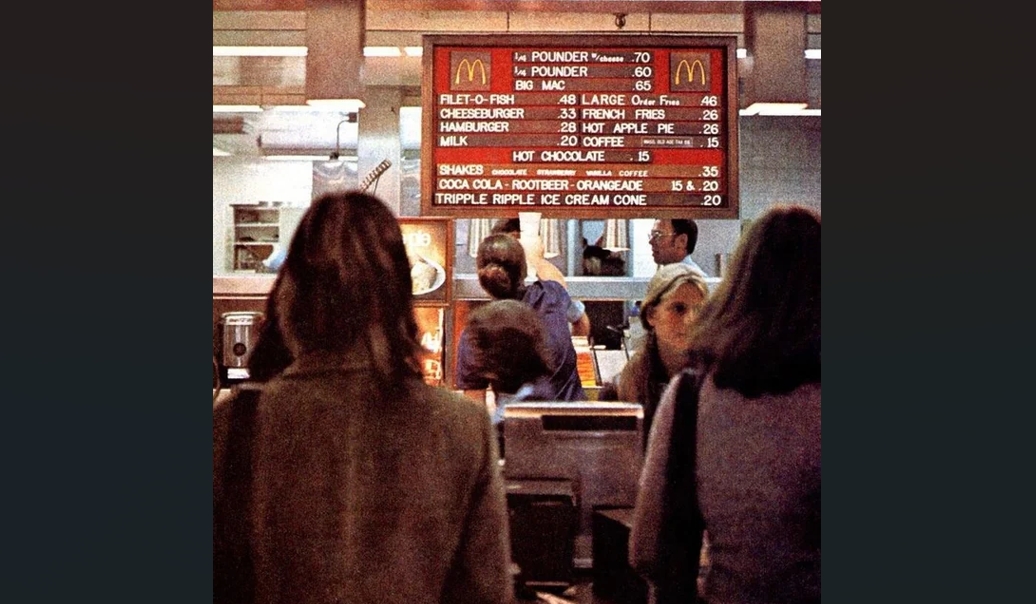
Long before the McFlurry became its signature dessert, McDonald’s aimed for technicolor ambition with the Tripple Ripple Cone. Appearing around 1970, this frozen treat was a psychedelic swirl of vanilla, chocolate, and strawberry soft serve, served in a single gravity-defying twist. It was a visual spectacle, promising a Neapolitan ice cream experience with the convenience of a walk-up window cone.
The Tripple Ripple’s downfall, however, was not its taste but its technology. The dessert required a specialized, complex machine with three separate spigots and reservoirs that had to dispense the flavors evenly. These units were notoriously difficult to clean, maintain, and operate, often resulting in messy, inconsistent swirls that slowed down service. As McDonald’s relentlessly optimized for speed and simplicity, this logistical headache was an easy target for elimination.
The real drama, however, began when McDonald’s discontinued the cone in 1974, breaking a handshake deal with its creator, Central Ice Cream president Tom Cummings, who had expected a 20-year exclusive agreement. The resulting lawsuit culminated in 1985 with McDonald’s paying $15.5 million in damages, making the Tripple Ripple one of the most expensive discontinued items in fast food history.

